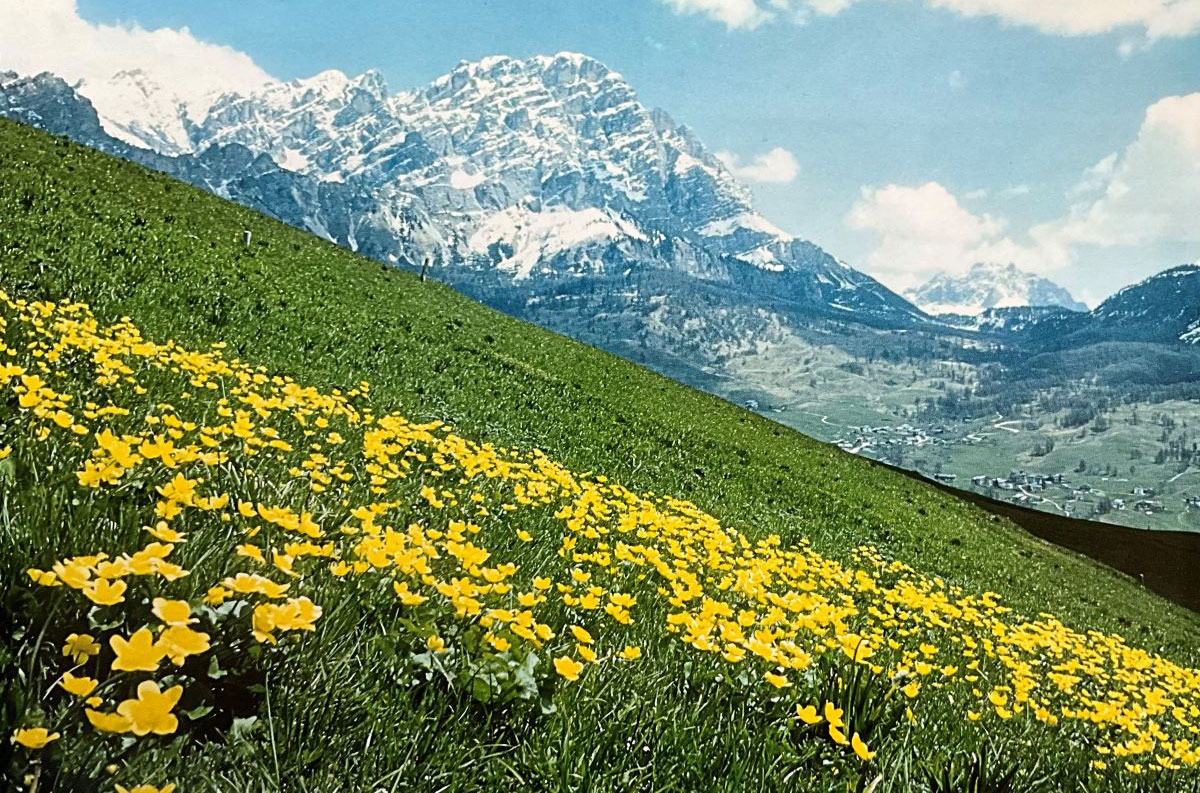Caltha palustris (Caltha palustris). Photo Massimo Spampani
Primatic gentian (Gentiana verna). Photo by Massimo Spampani
Spring anemone (Pulsatilla vernalis). Photo Massimo Spampani
Alpine saffron (Crocus albiflorus). Photo Massimo Spampani
Alpine Soldanella. Photo Massimo Spampani
Stick flower (Daphne mezereum). Photo Massimo Spampani
Bristling violet (Viola hirta). Photo Massimo Spampani
Snowy farfaraccio (Petasites paradoxus).
Snow heather (Erica carnea). Photo Massimo Spampani
Farfaro (Tussilago fanfaro). Photo Massimo Spampani
Tyrolean primrose (Primula tyrolensis). Photo Massimo Spampani
Spring begins today. On the peaks of the Alpine arc the snow still abounds, thanks above all to the rainfall of the last period, but at the lower altitudes and in the valley bottom the white blanket has now quickly melted and from the still yellowed meadows, emerge the first mountain flowers. They can be observed during the first walks and easy excursions, perhaps on the edge of a road or in the undergrowth free from snow. As the good season progresses, the flowering will gradually move higher up, without forgetting, however, that at all altitudes there will always be species that will flower for the first time even in July and August and even in autumn.
In fact, there are many factors at play that influence flowering, from the climate, to the particular microclimates, from the presence of water to the morphology of the soil, from the nature of the soil to the reaction of plants to the daily light-dark relationship. Some plants flower when light exceeds a critical duration, i.e. when the nights are short, others on the contrary when the light periods are shorter, i.e. in autumn and early spring. But there are plants that are not subject to the light-dark relationship and which flower based on other factors, such as temperature.
In nature the rule applies that the stability of a system depends on the complexity of the system itself. In fact, different behaviors correspond to different responses to variations in the environment itself. Therefore we see flowerings of the various species differentiated over time, even for example on an alpine pasture where the climate, altitude and nature of the soil are the same. To greatly simplify the concept, if all the plants flowered at the same time as the heather and a late frost occurred, the entire flowering would be compromised, with serious repercussions also for the insects which would be deprived of pollen and nectar.
Own snow heather it is the first species to flower, sometimes well in advance of the definitive melting of the snow, especially on slopes if well exposed to the sun and with sufficient water supply. It is no wonder to see it in bloom even in February if conditions allow. Like many other species, it prepares its buds already in autumn, to be ready for the flowers to bloom in spring.
In March along the edges of the roads on uncultivated and slightly damp soil, the yellow flower heads of the grandfather even before the leaves. Often, together with the coltsfoot, the large white, pink, violet globular inflorescences also emerge butterfly. Actually not so beautiful, but very evident along the roadside, even when passing by by car.
The meadows covered by snow have a very different appearance immediately after the melting of the snow alpine saffron also known by the scientific name of Crocus. It is often confused with autumn colchicum, which blooms in more or less the same environments, but not before the end of August. But be careful, because the latter is a very poisonous species and can be deadly, while the Crocus is so harmless that it deserves the name saffron.
In the still dry valley bottom meadows, the bristling purple, with violet flowers without scent. While if we enter the woods, as soon as the snow melts, a pale blue buttercup blooms: the trinity herb. It is unmistakable because it has characteristic three-lobed leathery leaves, violet underneath.
Among the shrubs in the forest the stick flower, so called because its pink and highly scented flowers, collected in bundles on the sides of the stem, appear before the leaves. They will form red, poisonous fruits with a peppery taste. Flowering can take place even before the snow finally melts.
The first gentian that colors the meadows blue, with patches sometimes dense with flowers, is the very common one primatic gentian which has the scientific name of Gentiana for nothing verna, that is, spring.
A glimpse of the humid meadows crossed by streams, with the snow-white mountains still in the background, is undoubtedly that offered by the vast egg-yellow patches of the flowers of the calta palustre. It is a very widespread buttercup that rises above 2000 metres. Even the soldanelle (there are three species) sometimes emerge from the snow. The most widespread is the common soldierwith a blue-violet corolla with long irregular fringes.
Among the numerous species of primroses, a very rare and particular one is the Tyrolean primrose, which grows on the rock in very harsh environments, on humid and dripping cliffs, often with the snow accumulated by avalanches still at the base. It’s about an endemism of the Dolomitesthat is, a typical and exclusive species of that territory, however in very limited sectors.
Early, on alpine and subalpine pastures, it flowers, immediately after the snow melts, l’anemone spring. A beautiful flower, which forms a carpet where the individuals grow close together, which seems to be made of hair. In fact, the most evident characteristic of these flowers, pink or violet, is their extremely accentuated hairiness.
Those mentioned here are just a few examples, of which we also publish photos, of the species that announce the arrival of the good season in the mountains. They let your mind wander along the itineraries of the first spring excursions, carefully choosing them on the sunniest slopes and also planning for some soaking of your boots where there is still melting snow. Despite the ongoing climate changes, with the flora tending to gain altitude, they are still the ones who welcome us.
